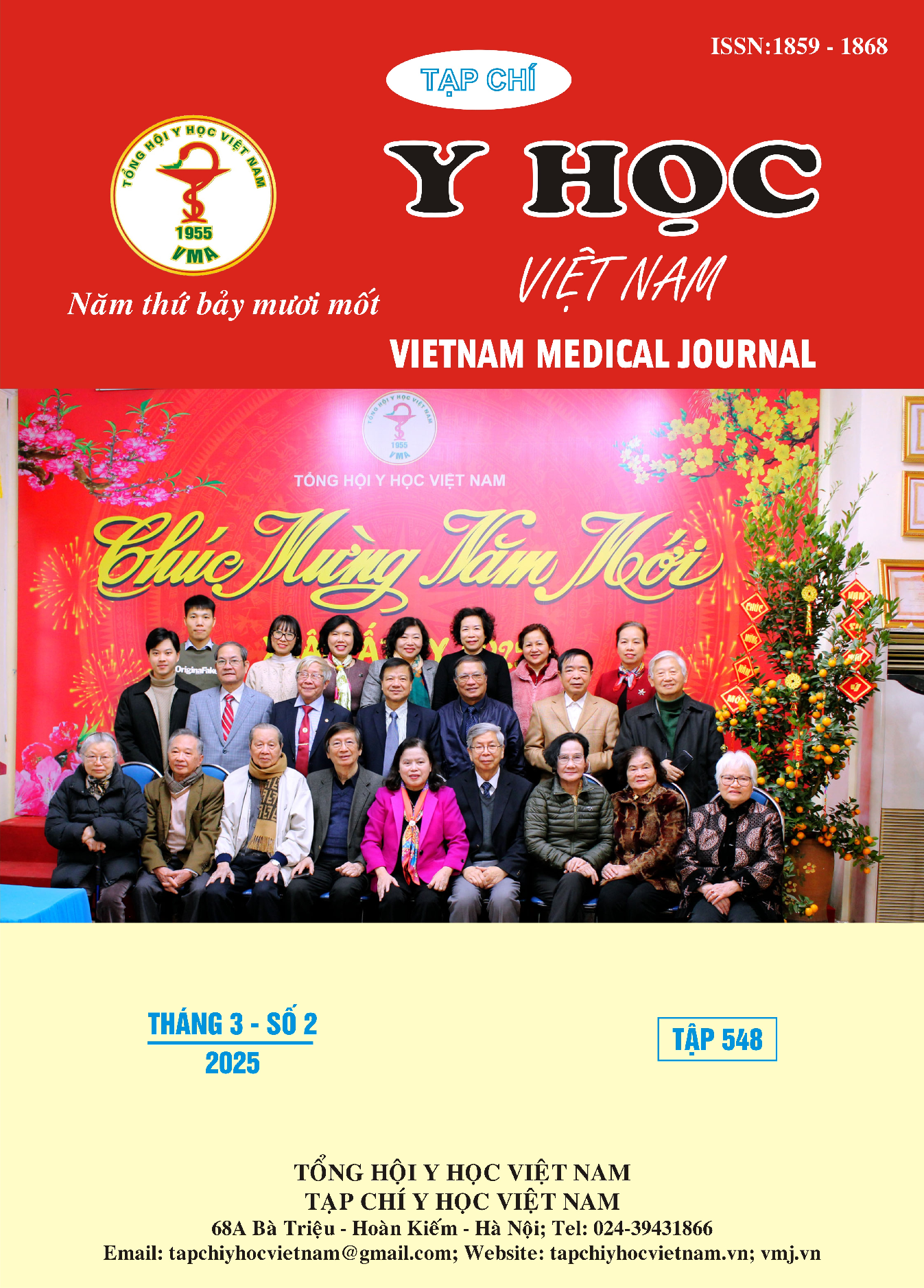EVALUATING THE RESULTS OF TREATMENT OF NASAL BONE FRACTURES AT CAN THO CITY
Main Article Content
Abstract
Background: Nasal bone fractures are a common injury, a large part of traffic accidents. Early diagnosis and treatment can help patients recover quickly and avoid long-term complications. Objective: Determine the characteristics of ready and paraclinical disease prevention and evaluate the results of treatment of major nasal bone injuries at Can Tho City. Materials and methods: 62 patients with nose injuries came for medical examination and hospital treatment at the Department of Otorhinolaryngology, Can Tho City General Hospital and Can Tho University Hospital of Medicine and Pharmacy from November 2023 to November 2024. Results: In a total of 62 patients, there were 47 men and 15 women, the average age was 36.5 ± 16.5, the urban population was 2 times higher than the rural population. The most common symtoms are nose pain 91.9% and epistaxis 80.6%. Sharp pain at the fracture site accounts for 70.3% and is the most common signs. On X-ray, 83.8% of images are misaligned. On sinus computed tomography, type IIA uses the highest rate of 54.6%. Patients is closed reduction with anesthesia using 81.1%. Conclusion: Closed reduction is still the method mainly used in cases of nasal trauma, and may not bring high treatment effectiveness early.
Article Details
Keywords
nasal bone fractures, closed reduction.
References
2. Flint P, Haughey B, Valerie L, et al. Cummings Otolaryngology. Head and neck surgery. 6th ed. St. Saunders: Elsevier; 2015
3. Hollins A., Pyfer B., Breeze J., Zhang G., Lohmeier, S. J. Closed reduction of nasoseptal fractures: key concepts for predictable results. British Journal of Oral and Maxillofacial Surgery, 2023, 61(5), 344-350. https://doi.org/10.1016/ j.bjoms.2023.03.014
4. Hwang K., You S. H., Kim S. G., Lee, S. I. Analysis of nasal bone fractures; a six-year study of 503 patients, J Craniofac Surg, 2006, 17 (2), pp. 261-264. https://doi.org/10.1097/00001665-200603000-00010
5. Jalali M, Heidarzadeh A, Alvai N. Evaluation of Satisfaction Rate of Patients and Physician from Closed Reduction of Nasal Fracture. J Guil Uni Med Sci 2009;18(69):47–52. [Full text in persian] URL: http://journal.gums.ac.ir/ article-1-267-en.html
6. Kang C. M., Han D. G. Correlation between Operation Result and Patient Satisfaction of Nasal Bone Fracture. Archives of Craniofacial Surgery, 2017, 18, 25 - 29. https://doi.org/10.7181/acfs.2017.18.1.25
7. Motamedi MH. An assessment of maxillofacial fractures: a 5-year study of 237 patients. J Oral Maxillofac Surg. 2003 Jan;61(1):61– 64. doi: 10.1053/joms.2003.50049. PMID: 12524610
8. Rhee SC, Kim YK, Cha JH, Kang SR, Park HS. Septal fracture in simple nasal bone fracture. Plast Reconstr Surg. 2004 Jan;113 (1):45-52. doi: 10.1097/01. PRS.0000096705.64545.69. PMID: 14707621
9. Tota S.M., Modi N.R. Incidence, evaluation and management of nasal bone fracture: study of 60 cases. International Journal of Otorhinolary-ngology and Head and Neck Surgery, 2021, 7(9), 1478-1481. https://doi.org/10.18203/issn.2454-5929.ijohns20213283


